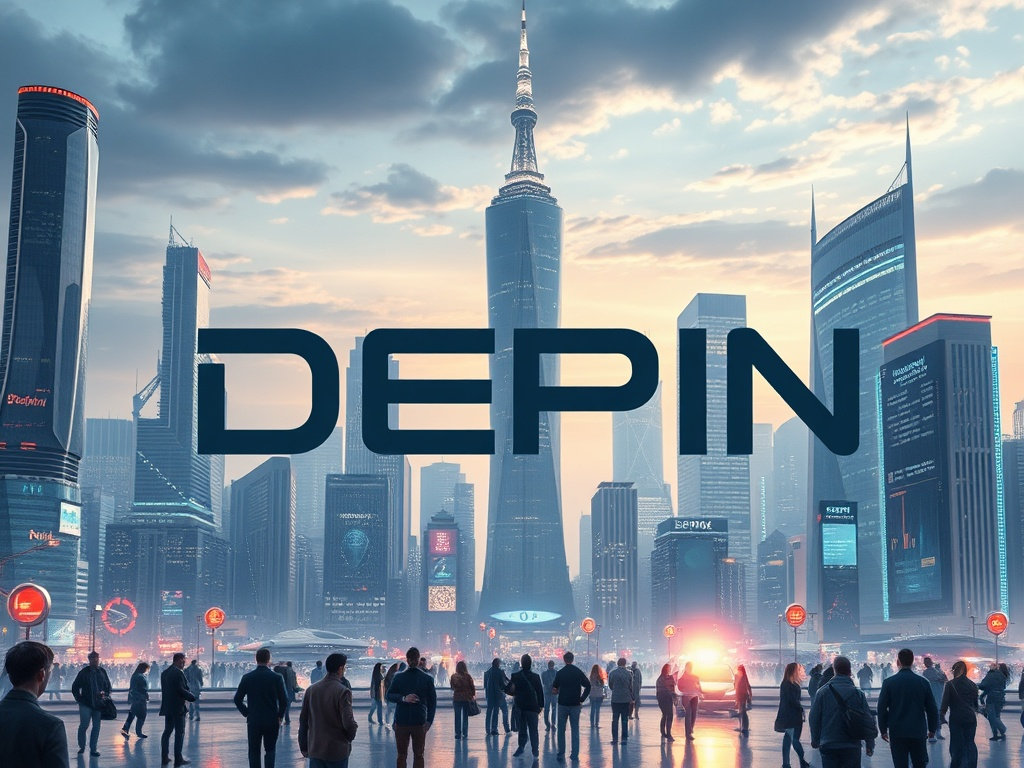
While Silicon Valley continues to dominate Web2, regions like the UAE and Singapore are at the forefront of DePIN adoption, driven by better regulations and genuine infrastructure needs.
In Q1 2025, the decentralized physical infrastructure network (DePIN) sector attracted $150 million in capital, with projections estimating a market size of $3.5 trillion by 2028. However, the most significant development lies not just in the funds raised, but in the regions where these networks are being established. Emerging markets in the Middle East, Southeast Asia, and South America are leading the charge in DePIN adoption, rather than Silicon Valley.
The dynamics of DePIN and blockchain markets favor areas with infrastructure gaps and progressive Web3 regulations. DePIN clusters flourish where traditional infrastructure has faltered, prompting communities to seek out collaborative solutions. Investors and developers in DePIN should focus on these conducive market conditions beyond the US.
DePIN Sandboxes
Silicon Valley’s historical success in Web2 was bolstered by pivotal regulations like Section 230 and the Digital Millennium Copyright Act. In contrast, the US has only recently introduced the GENIUS Act, and the White House’s July Digital Assets Report marked the first federal acknowledgment of value created by DePIN. While the US is just beginning its DePIN journey, thriving Web3 ecosystems elsewhere demonstrate that success relies on regulatory clarity.
Dubai’s Virtual Assets Regulatory Authority (VARA), established in 2022, creates tailored sandboxes for Web3 infrastructure projects. The Monetary Authority of Singapore (MAS) actively promotes the tokenization of real-world assets through initiatives like Project Guardian and the Singapore Blockchain Innovation Programme. Additionally, the country’s fintech regulatory sandbox provides clear guidelines for blockchain experimentation.
In South Korea, telecommunications giant LG U+ has been testing a blockchain-based cross-border payment system since 2018, a process that would have faced lengthy approval times under US regulations. The country experienced a 15% year-on-year increase in blockchain service providers in 2023. Vietnam’s national blockchain strategy, launched in late 2024, offers legal clarity for blockchain applications across finance, logistics, agriculture, and data management. The government is currently piloting its NDAChain platform, aiming to enhance e-government and the digital economy through decentralized citizen identification.
Deeper Pockets for DePIN Projects
While the Bay Area captured 24% of the $368 billion in global venture capital funding in 2024, significant capital for blockchain is flowing elsewhere. The UAE ranked third on the Henley Crypto Adoption Index, which measures cryptocurrency and blockchain integration among nations (the US is fourth). With an estimated 7,100 new millionaires expected in Dubai by 2025, the Gulf’s expatriate community—characterized by high disposable incomes and positive attitudes toward emerging technologies like DePIN—is on the rise.
Abu Dhabi’s $500 million Digital Energy Infrastructure Fund specifically targets investments in “blockchain, DePIN, AI, cloud, and other compute cluster applications.” The UAE is positioning itself as a leader in the Web3 space by backing DePIN applications in sectors where traditional infrastructure has struggled to meet demand.
Singapore’s sovereign funds, Temasek and the Government of Singapore Investment Corporation (GIC), have shifted their focus to blockchain infrastructure outside conventional tech hubs. Recently, the GIC invested $70 million in Hong Kong-based BC Group, the parent company of crypto exchange OSL, while Temasek led a $110 million funding round in Hong Kong’s Animoca Brands, Asia’s leading blockchain investment firm. Sovereign wealth funds are strategizing for a future rooted in digital infrastructure.
Building Necessities Over Luxuries
New York and Silicon Valley were once viewed as the only viable locations to scale a Web3 product. That landscape is changing.
Though most of Helium’s 380,000 decentralized wireless hotspots are still in the US, new deployments are rapidly enhancing coverage in Southeast Asia and South America. During Helium pilots in Mexico, Movistar subscribers averaged 390 megabytes—equivalent to seven hours of web browsing—daily on the Helium network, illustrating how DePIN can address real connectivity challenges.
The takeaway for DePIN builders and entrepreneurs is clear: design for users who genuinely need your infrastructure, rather than those who might find it intriguing in a Palo Alto café. For investors, the opportunity lies in identifying projects that tackle real issues in markets with regulatory clarity and increasing adoption. Policymakers can facilitate this by creating frameworks that support new blockchain-based projects instead of forcing them into rigid existing categories.
Asian companies led the mobile revolution of the 2010s in response to losing ground in the desktop market, giving rise to giants like WeChat, Gojek, and Kakao, making those markets challenging for Silicon Valley to penetrate. Now, countries like the UAE, Vietnam, and Singapore are establishing a similar advantage in the DePIN space, and Web3 companies should pay attention to the implications of this shift over the next five to ten years.
Source: Cointelegraph Edited by Bernie.





